Paubha and Thangka are traditional art forms that aim to evoke a sense of divinity within oneself. Lok Chitrakar, an artist, explains that Paubha originates from Patrabhattaraka, meaning “the carrier of letters to the gods,” and has evolved over time into its current name. These paintings have served various purposes throughout history, including aiding in meditational practices, marking the completion of specific rituals, and commemorating events at the Guthi. Nevertheless, the significance of these paintings has dwindled with time, as they are now occasionally bought solely for ornamental purposes in homes. Nonetheless, some individuals still create and revere these artworks.
Lok Chitrakar is a renowned artist who has been consistently creating Paubha paintings. However, there have been instances when he has taken more than two decades to complete a single piece. When asked about the reason for the prolonged duration, he explains, “If it were just an artwork, I could complete it within a week. But, I also need to conduct my own research, communicate with individuals who meditate on these paintings, assimilate their inputs, and create the artwork with authentic emotions and compassion. Without properly understanding the subject that I am painting I cannot bring myself to complete it”

Furthermore, Lok Chitrakar has received the ‘Dekha‘ (initiation in a religious practice) from a master who consistently practices such forms of meditation. Such initiations are not typically bestowed upon disciples who are deemed unworthy or incapable of understanding the deeper philosophies within tantric tradition. Mr. Chitrakar explains, “Most of these forms of knowledge run a high risk of misinterpretation, so a lot of internal reflection is necessary before discussing or showcasing these paintings to others. However, with the modernization of society and modern technology, even paintings that were meant to be sacred and restricted are now being sold in the market.”
Currently, Lok Chitrakar is showcasing the majority of his artworks at the Museum of Nepali Art, MONA from March 26th to April 26th. During the exhibition, some individuals have been moved to tears upon viewing the artwork, while others feel as if they are entering a sacred temple. Ursula Manandhar the Head of Research at MONA, who has written books on Lok Chitrakar’s work, recounts an incident where an elderly man was so overwhelmed by the paintings that he circumambulated the 108 Lokesvara paintings 108 times. There have been numerous instances where people have become ecstatic and teary-eyed while viewing the paintings.
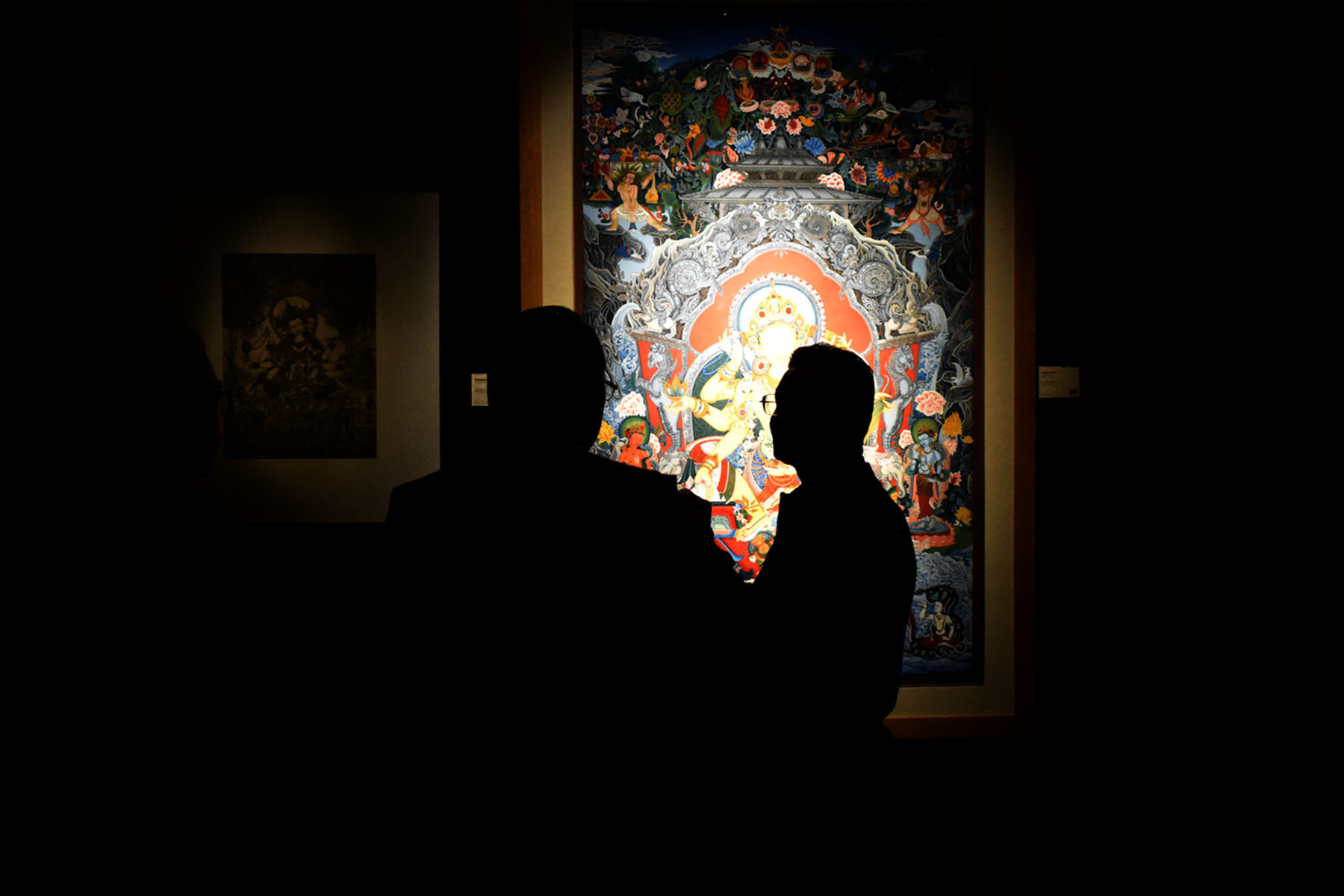
Regarding creativity in the creation of Paubha paintings, one may wonder if there is any room for creativity since the deities must adhere to their iconography. Lok Chitrakar, the artist, explains, “The primary deities cannot be altered; we simply place them in the center. However, the artist has the freedom to play around with the ornaments and backgrounds involved in the painting. The more unique concepts an artist can bring to the table, the better the end result will be. Over time, with dedicated practice, each artist develops a distinct style, which becomes recognizable to collectors. During ancient times, since Paubha paintings were considered to be works of divinity, artists did not inscribe their names on the canvas. However, as times have changed, artists now sign their works.”
When asked about the purpose behind why most clients purchase his artwork, the veteran artist explains, “Many buy them for meditational purposes, but there has been an increase in people buying them for decorative purposes as well. Some of my artworks have also been purchased by international galleries who seek permission to use them for promotional purposes. Each time, they ask for my permission and send me royalties for utilizing my artwork. I am glad to see this trend developing in Nepal as well.”

What are some of the ‘must see paintings’ in the museum ?
While every artwork has its own meaning and purpose, answering this question outright may not be the most appropriate approach. However, after speaking with the museum caretakers to determine which paintings are attracting the most attention, the following paintings were identified:
The Red Ganesh (Rakta Ganesh)
The painting features Ganesh, with a red aura and body, as the central figure. He is depicted holding various objects in his twelve hands. The invoking seed mantra (Bija Mantra) of Ganesh is inscribed in most corners of the canvas. When asked how many mantras are present in the painting, the artist responds with a smile, “I don’t even know, let’s count together.” While counting together, 54 mantra were found, but there are a lot more than that that we might have missed. The aura and atmosphere created in the painting are truly captivating. Those who practice the same form of meditation and have religious beliefs may find inspiration in this piece. The form of Ganesha comes from the Chakrasamvara cycle of Tantras where Ganesha is a revered deity.
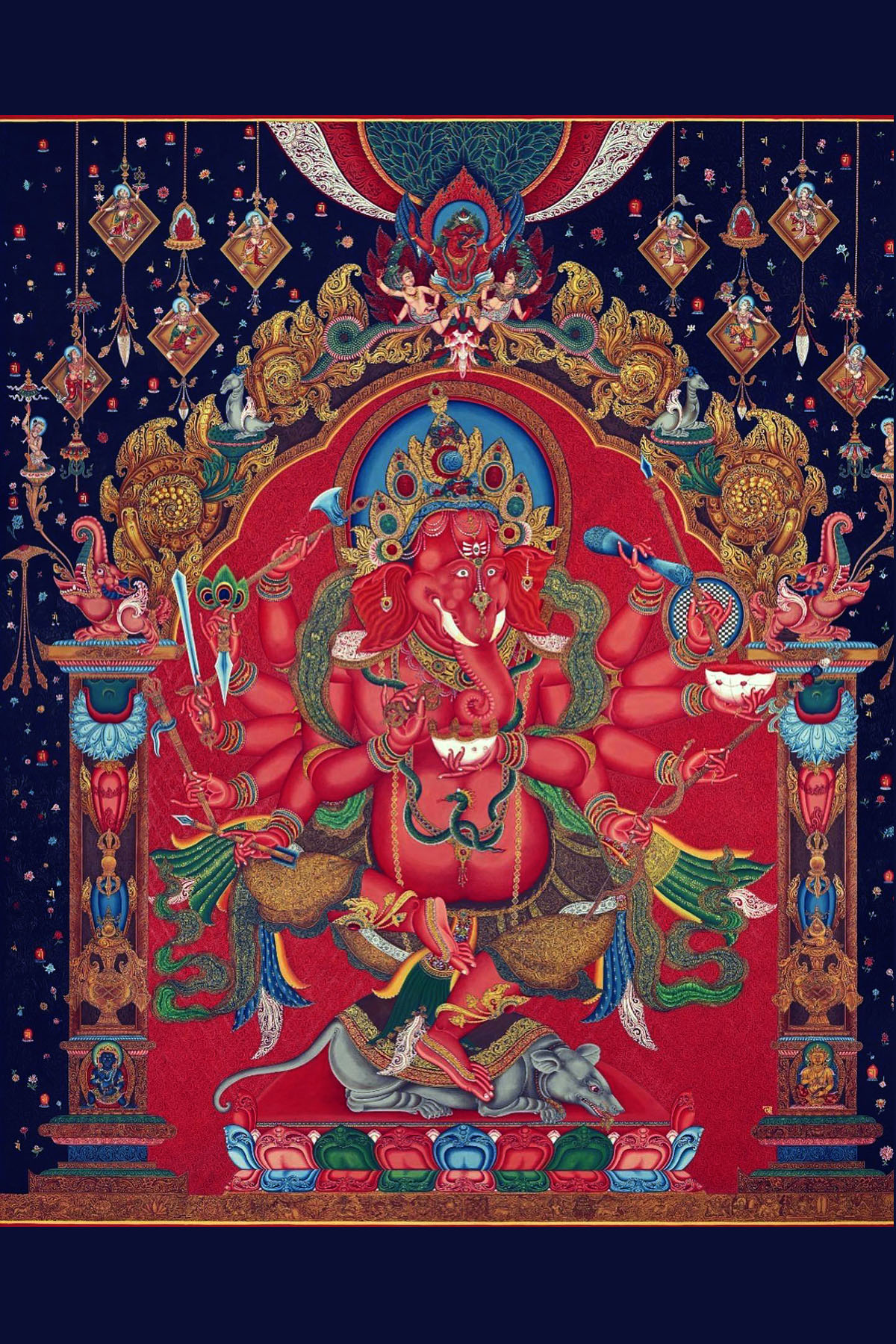
Hevajra Mandala
The central figure of this painting represents the unity of male and female forms. Unfortunately, it is often misconstrued as being sexual in nature. However, the artist emphasizes that this painting depicts the ultimate state of meditation where all aspects come into harmony. The union of the male deity Hevajra with the female deity Nairatmya depicts the union of Method and Wisdom that brings one to enlightenment. Additionally, there are eight mandalas and eight cremation grounds depicted alongside the Hevajra, which represent the eight doorways of the eight directions and are linked to the tantric sadhakas having practiced much of their meditation in such cremation grounds. This painting is traditionally oriented to face a specific direction, generally such paintings are depicted with the central deity facing eastward, towards the realm of the Buddha Akshobhya. The artist further explains that this painting has been considered sacred for centuries and only accessible to dedicated practitioners due to the high risk of misinterpretation. Therefore, only enlightened masters can provide an accurate explanation of its meaning, as the interpretation of the symbolism can vary according to each individual’s spiritual realization.
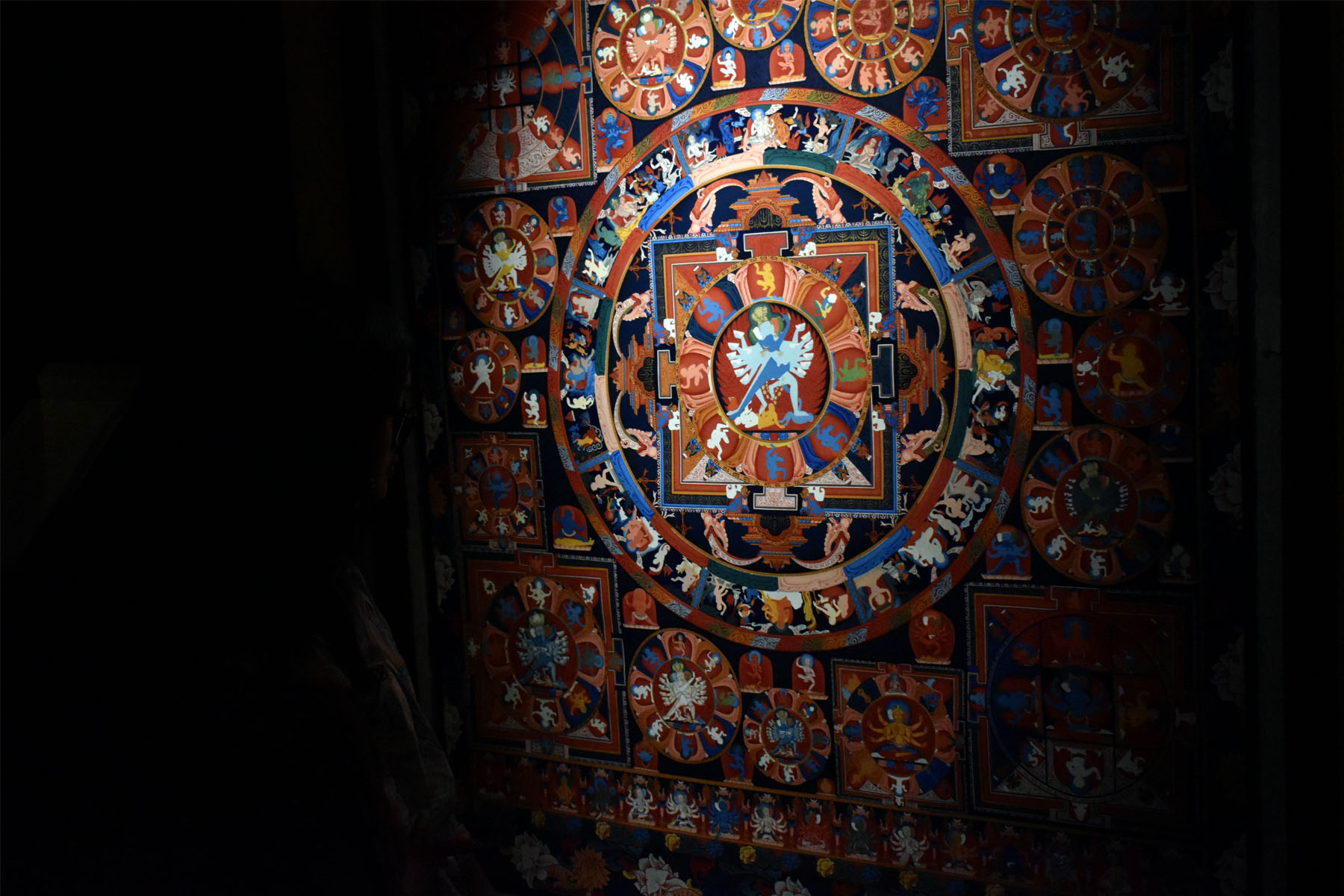
The 108 Lokesvara
The Bodhisattva known as Lokesvara, are revered as compassionate beings who have reached the brink of enlightenment, but have postponed it until all sentient beings attain it. They are worshipped by those who follow the path and it is believed that they assist people who are on their spiritual journey. Each Lokesvara has a unique name, appearance, attributes, and abilities, and they are venerated in different ways. Popular Lokesvaras include Padmapani, Vidyapati, Vajrapani, Manjunatha, among others. There are many forms of Lokeshvara corresponding to the months of the year as well. Various stories of Lokeshvara coming to the aid of devotees in their time of need are recounted in the sutras and tantras.
The current exhibition of Lokesvara paintings is displayed in a bridge-like space at the museum. According to Rajan Shakya, the museum director and curator, this arrangement is meant to symbolize the purpose of Lokesvara, which is to help individuals cross over from the suffering of samsara to enlightenment. The Lokesvara therefore become a bridge connecting the mundane world to the spiritual.
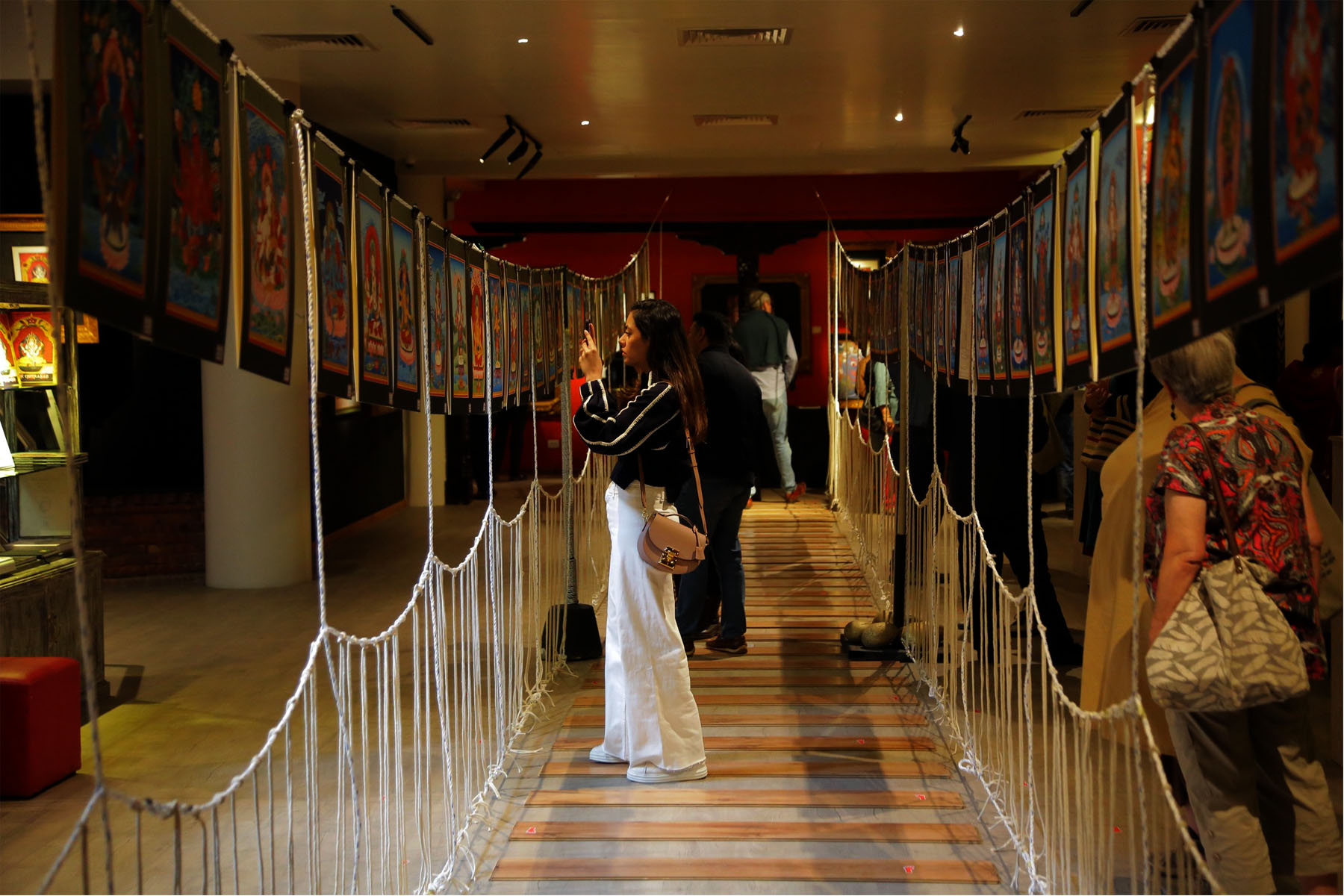
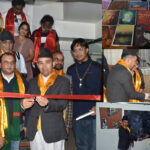
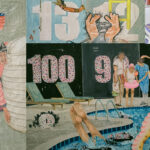


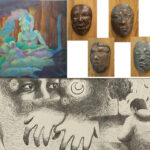
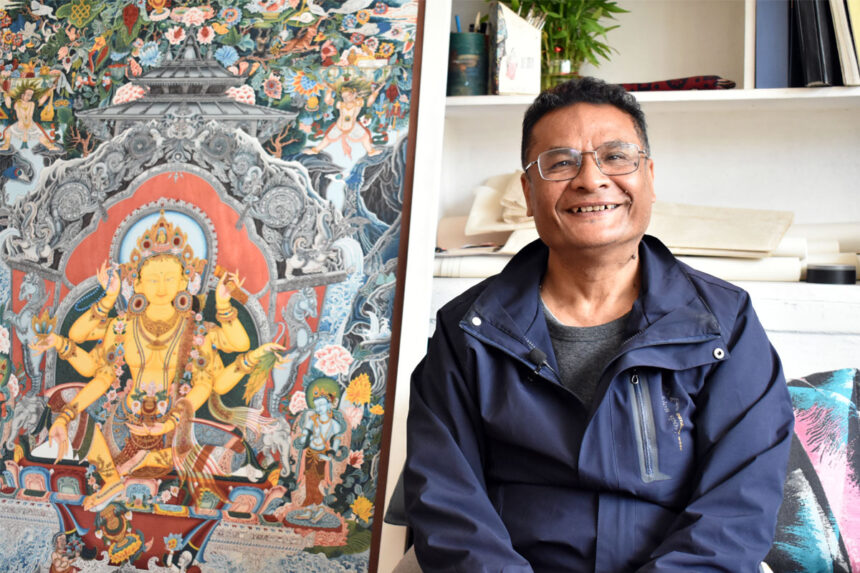

Leave A Comment